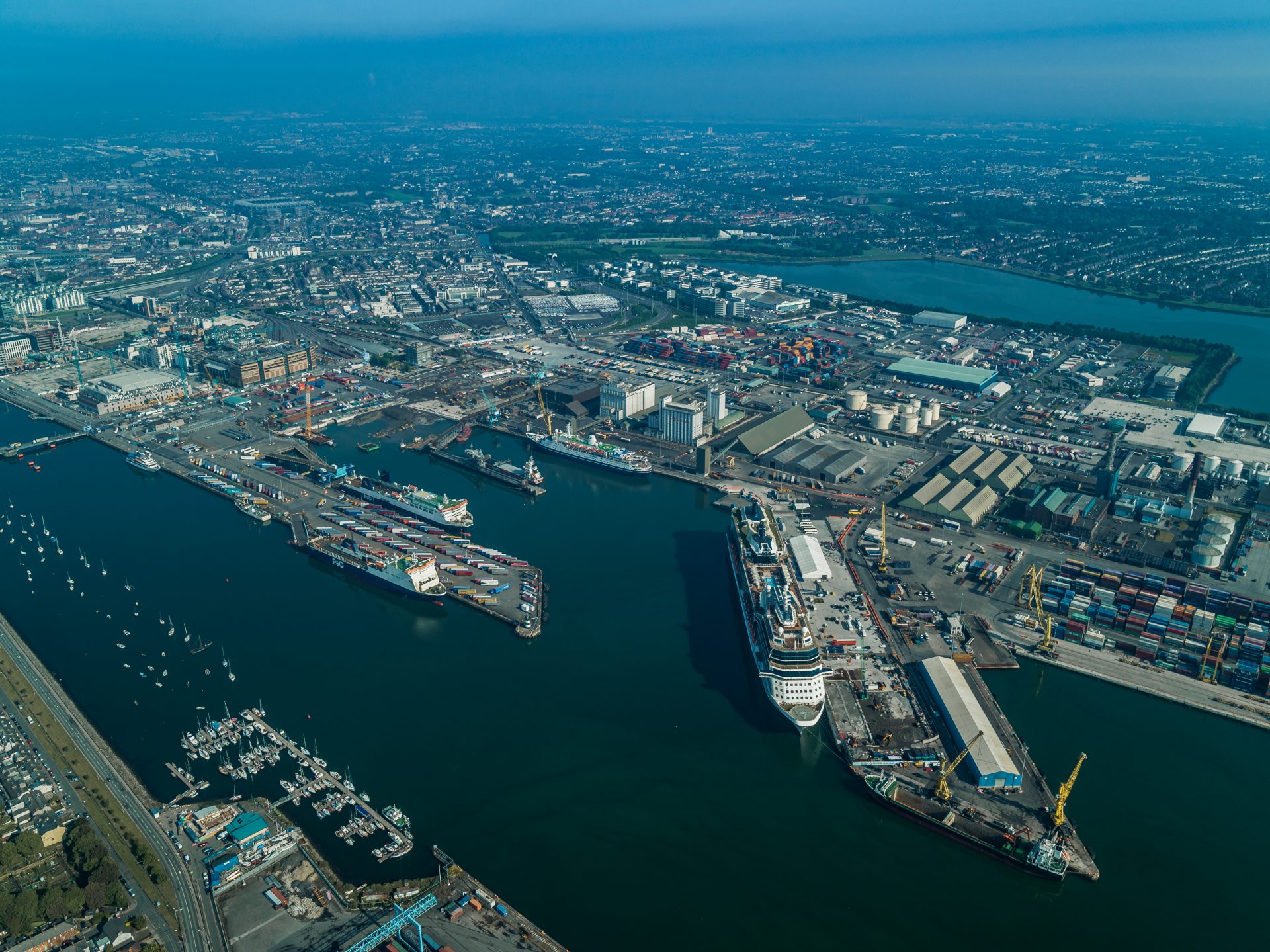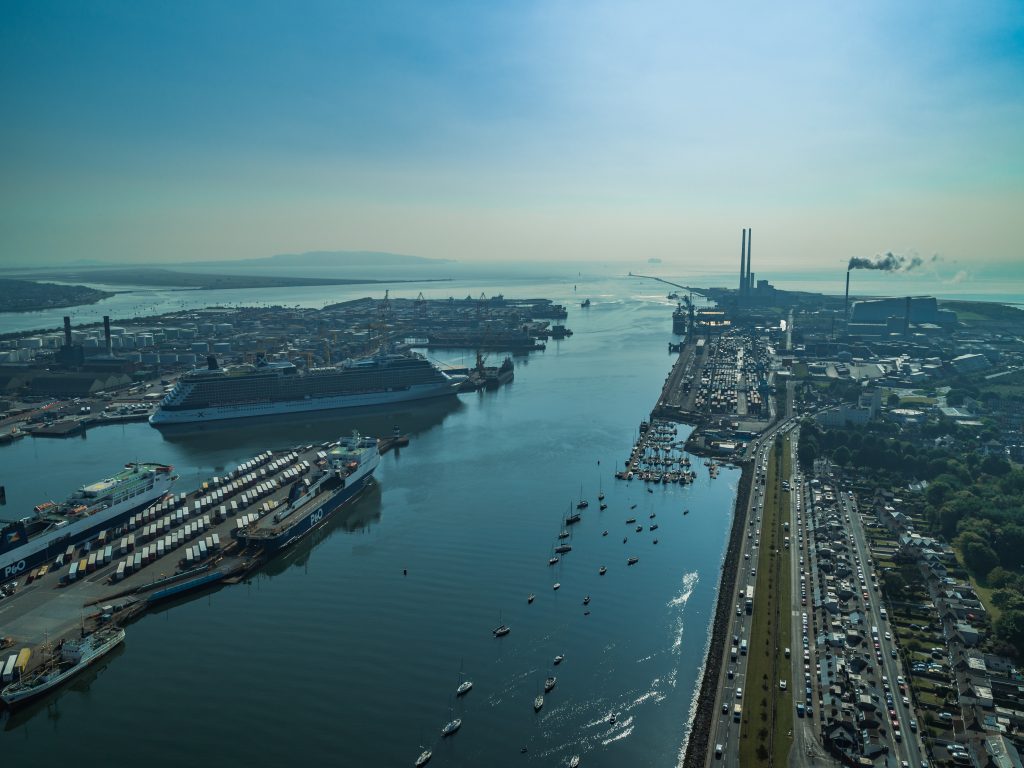Overall tonnage declines in Dublin Port in Q1 2020 by -4.8%

14 April 2020
Monday, 13th April 2020. Dublin Port Company has today reported its first quarter trading figures for 2020. The latest figures show a decline in overall port tonnage of -4.8% compared to the first quarter of 2019.

The first three months of 2019 were dominated by the original Brexit departure date of
31st March 2019 and volumes through Dublin were very high due to stockpiling. (Q1 2019 imports were 8.0% ahead of imports in Q1 2018).
Against this base, significant growth in Q1 2020 was always unlikely but the impact of the coronavirus, particularly in March, combined with significant shipping disruptions due to bad weather in February caused volumes to decline by 470,000 tonnes or -4.8% in the first quarter of 2020.
Unitised trade (trailers and containers combined) fell by -4.4% to 360,000 units with Ro-Ro declining by -5.3% to 256,000 units and Lo-Lo by -2.2% to 187,000 TEU.
Imports of new trade vehicles through Dublin Port decreased by -10.3% to 30,000 in the first quarter and a significant continuing decline seems inevitable for the rest of the year.
Bulk liquid volumes, primarily petroleum products, grew by +4.4% to 1.1m tonnes. Aviation fuel accounts for more than one-fifth of all petroleum imports in Dublin Port and the impact of the coronavirus on air travel will lead to a large decline in imports of aviation fuel and in overall petroleum imports into Dublin Port in the months ahead.
Bulk solid commodities declined by -13.2% to 468,000 tonnes.
Ferry passenger volumes decreased by -17.8% to 224,000. Similarly, the number of tourist vehicles fell by -18.0% to 67,000. One cruise ship called to Dublin Port in Q1 2020 and the outlook for this sector everywhere for the remainder of the cruise season to end-September is bleak.
Commenting on the results, Dublin Port’s Chief Executive, Eamonn O’Reilly, said:
“Against the background of an exceptionally buoyant first quarter in 2019 because of Brexit, we did not expect to see continued strong growth in Q1 2020. However, the combination of exceptionally bad weather in February and the rapid impact of the coronavirus during March has caused port throughput to decline by 470,000 tonnes or 4.8% in the first three months of the year. Although our throughput was behind that of 2019, volumes in Q1 2020 were still ahead of Q1 2018 by 1.9%.
“The not too disappointing figures for Q1 2020 are irrelevant, however, as we look ahead to the second quarter during which we will see a very significant decline in volumes across all cargo modes and in passenger traffic.”
“While work on long-term Masterplan development projects will continue once work restrictions are lifted, we will focus determinedly over the next three months on keeping day to day port operations going in order to maintain critical trade flows particularly of foodstuffs, essential consumer goods and medicines. It is at times like this that we see the importance of the supply chains we can normally take for granted in our daily lives.”
“Keeping Dublin Port open depends on a small number of critical marine operations, maintenance, security and fire warden staff working 24 / 7. We have adapted normal working arrangements to protect staff and their families to ensure that key functions remain manned at all times and ships can enter and leave Dublin Port safely. We are also delighted to welcome back two recently retired pilots to service to provide additional manpower resilience for this essential function.
“Outside of our own operations, all of the cargo terminals in Dublin Port continue to operate normally and hauliers are maintaining the flow of goods in and out of these terminals. The contribution of port workers, of hauliers and of the anonymous ships crews who maintain our supply chains is immense.
“In advance of finalising debt facilities of €300m in December 2019, we had been reducing the company’s cost base in recent years notably by way of a voluntary redundancy scheme which is reducing employee numbers by 11% and we are in a good position now to absorb the shock of reduced volumes as a result of the coronavirus in anticipation of economic recovery whenever that might happen. In particular, we are well placed to continue the long lead time challenge of providing additional port capacity for long-term growth.”
Click here for more details.
